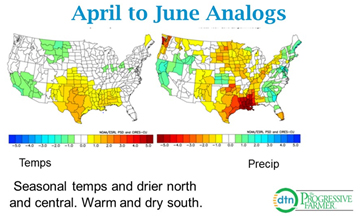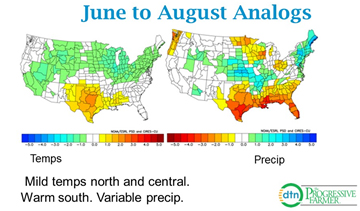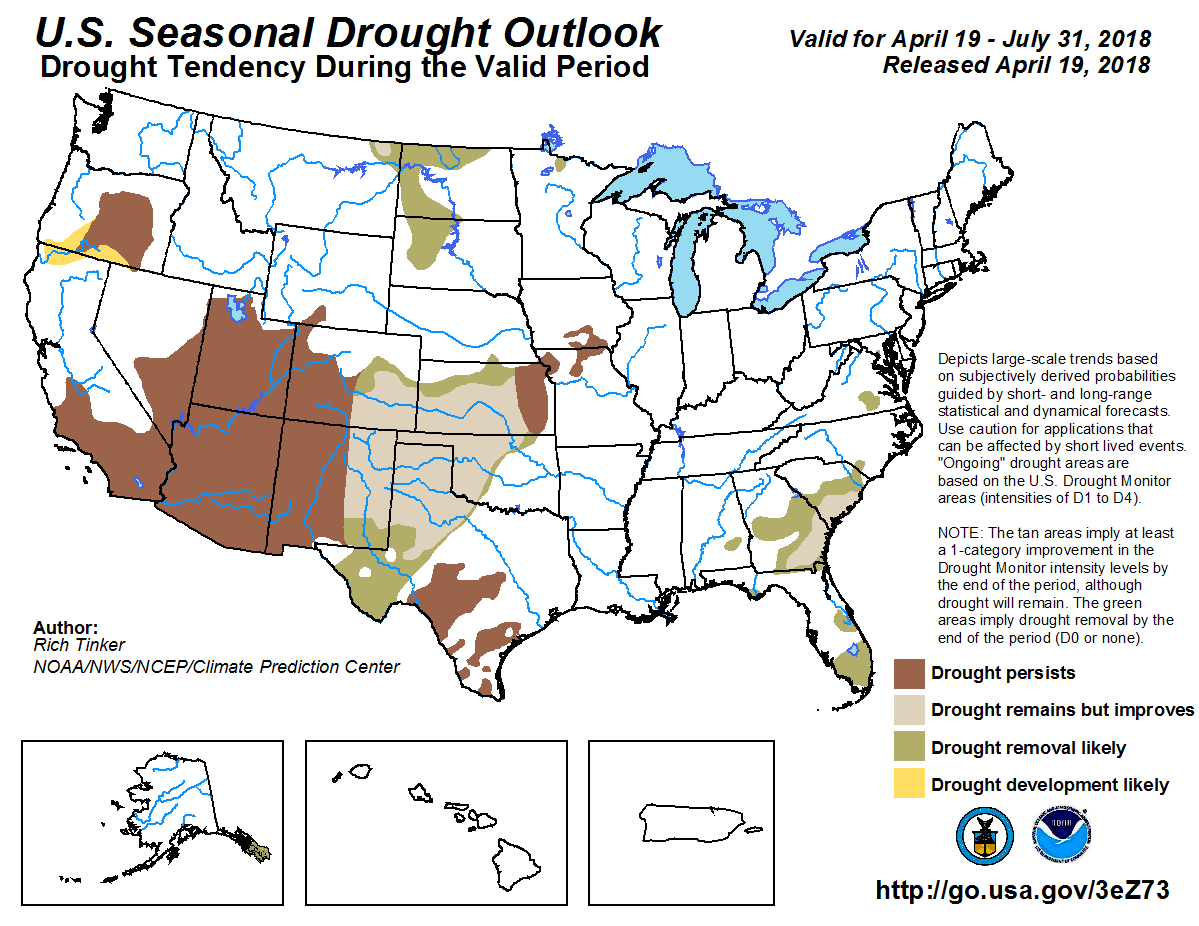As of April 23, only 5 percent of the national corn crop and virtually none of the soybean crop has been planted, according to USDA. This compares with a 2013-17 average of 14 percent and 2 percent. Locally, Kansas farmers have planted 15 percent, 9 points behind average and Nebraska, 2 percent, 7 points behind. Iowa and South Dakota have yet to launch. This is the slowest national pace since 2014. No progress has been reported for grain sorghum in our service area, which is normal. Spring wheat is really lagging its average at only 3 percent compared with 25 percent in the six reported states. South Dakota has planted only 2 percent compared with an average of 50 percent.
The 2014 season serves as an analog year for weather, said DTN Senior Meteorologist Bryce Anderson. Several key factors this year were in play then as well: Most notably a La Nina that shifted to neutral over the summer and “high-latitude blocking highs” that kept wintery temperatures in place longer into the spring.
From April 1 to 18 this year, temperatures have been as much as 20 degrees below average in Minnesota and Wisconsin and 10 degrees below average all the way south to Kansas, he noted.
The lesson from 2014 is that a slow spring does not necessarily mean reduced production. This week four years ago, corn planting was 6 percent compared with a 14 percent average. And that year turned out better than okay: The national corn yield in 2014 was a record 171 bu./acre, leading to a record 14.2 billion bushel crop. Likewise, soybeans logged a record 47.8 bu./acre and a record 3.97 billion crop.
La Niña does seem to be fading and is predicted to shift to an El Niño by fall. This points to a trend toward drier weather beginning in May and into June, he said (right map), which will allow field work to pick up steam.

Cooler than usual temperatures look likely in the upper Plains and Corn Belt, with close to average rainfall over much of the Corn Belt (maps below). The seasonal Outlooks from the National Oceanic and Atmospheric Administration (NOAA) lean in the same direction.

Southern Plains
In winter wheat country, USDA reports 37 percent of the crop in poor/very poor condition, compared with 13 percent last year, and the good/excellent rating is only 31 percent compared with 54 percent last year. The Kansas wheat crop is 49 percent poor/very poor and just 14 percent good/excellent. Nebraska’s crop is rated much higher, with only 7 percent in the bottom categories and 56 percent in the top two.
The Seasonal Drought Outlook for April 19 to July 31 suggests an improvement in the Southwest – perhaps to moderate/severe ratings.
“Hardly any dryness is hinted at for the Corn Belt or the South, other than Georgia and South Carolina,” Anderson said.

Yield and Price Prospects
In his forecasts for our GrowingOn meetings, Anderson said yields would be “variable.” That is still appropriate, he said, adding “trendline is possible; above-trend uncertain.” Of course, trendline yields set a fairly high bar: more than 175 bu./acre for corn and 49 bu./acre for soybeans.
Even with ample stocks in storage, early worries about planting have driven December corn futures above $4.15/bu. and November soybeans above $10.50.
As a possible price-positive wildcard, Anderson did note that dry weather is appearing in important Brazilian safrina (second-crop) corn areas and could reduce production from the hefty 88 mmt that were expected.
For more from Bryce Anderson, visit: https://www.dtnpf.com/agriculture/web/ag/home

